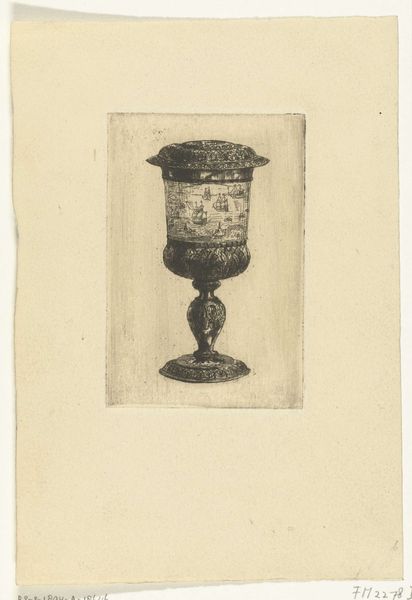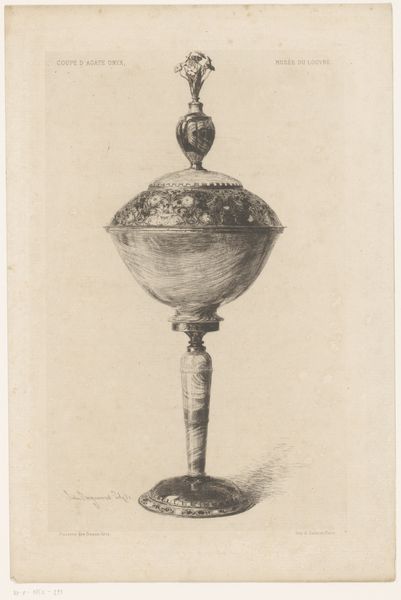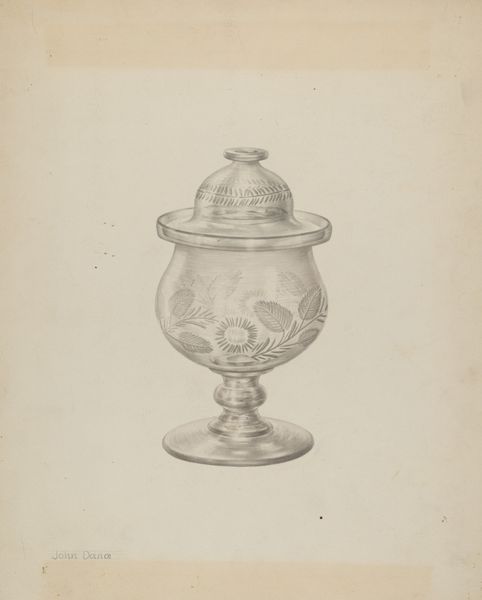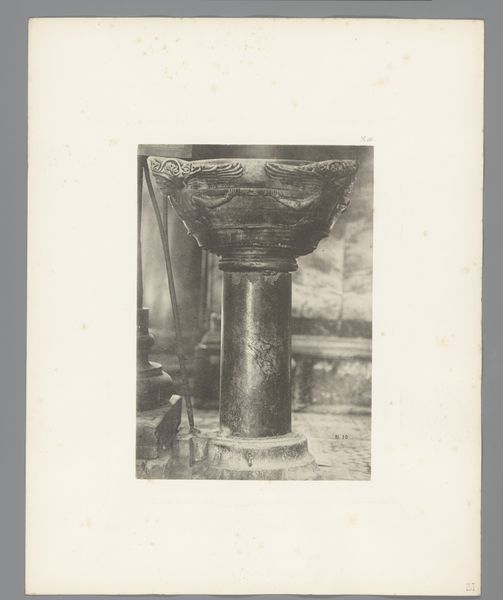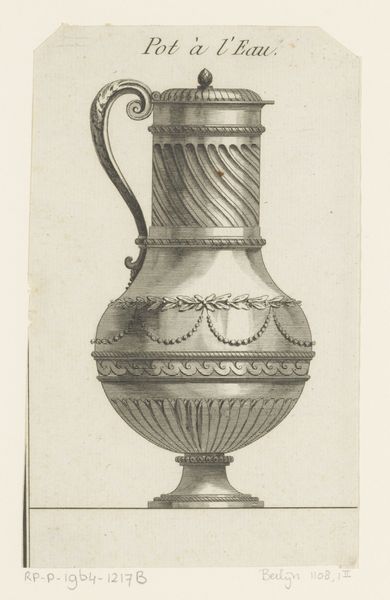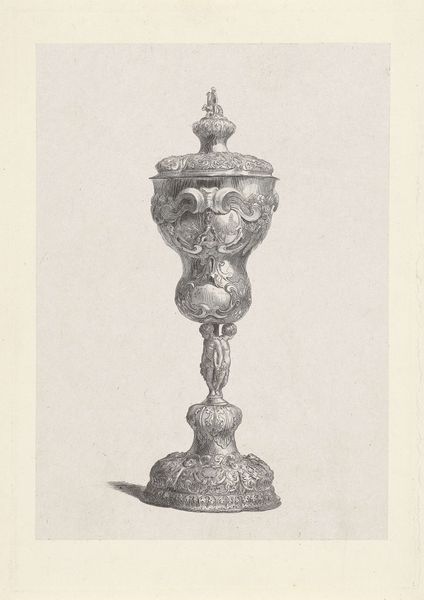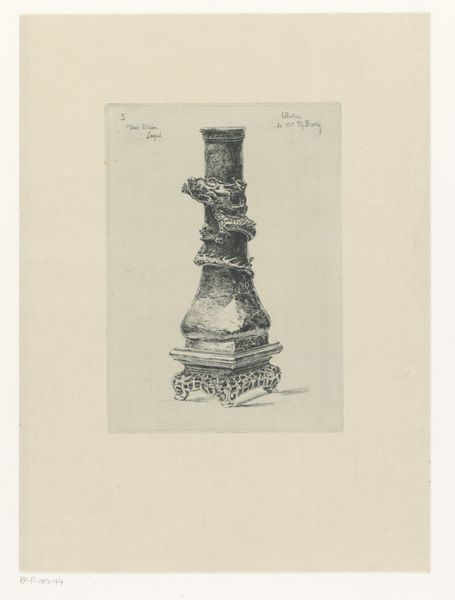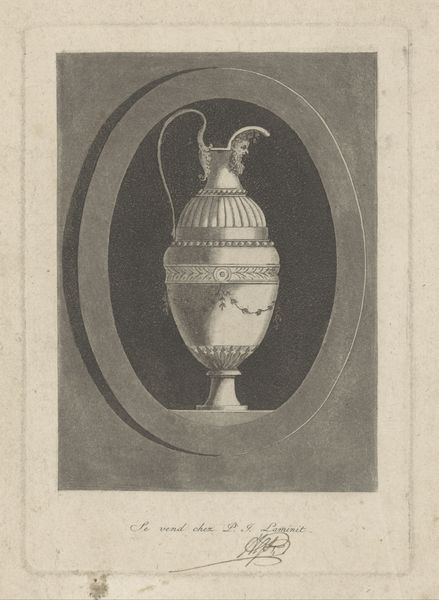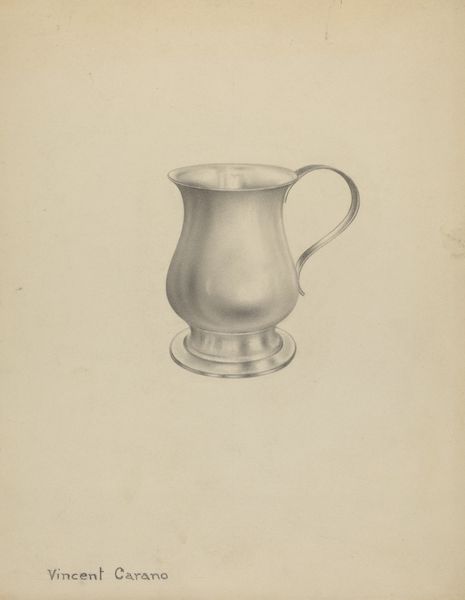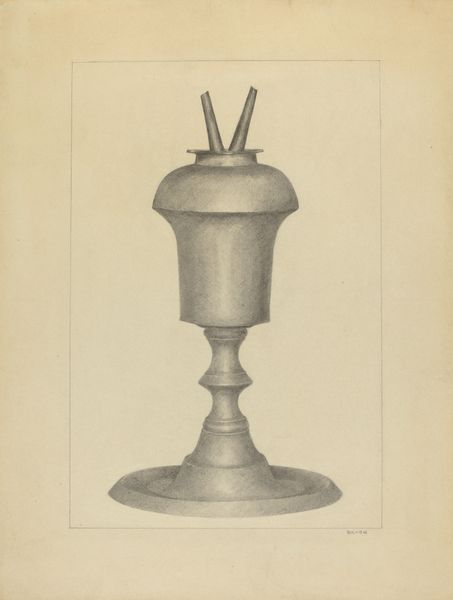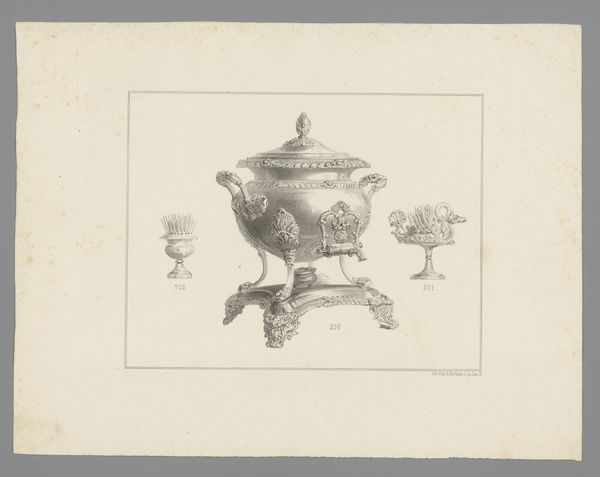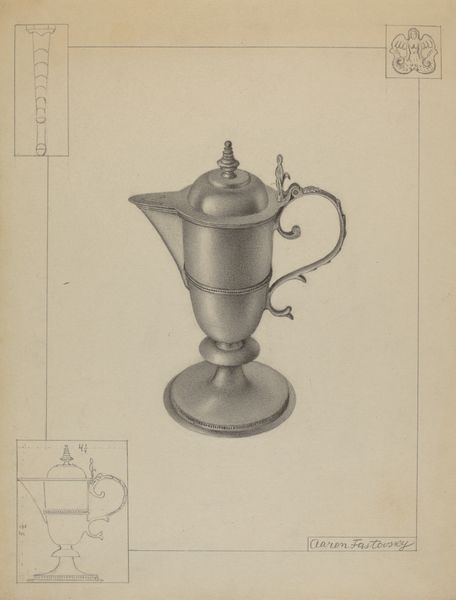
drawing, print, metal, etching
#
drawing
# print
#
metal
#
etching
#
pencil sketch
Dimensions: height 118 mm, width 75 mm
Copyright: Rijks Museum: Open Domain
Curator: At first glance, this object almost looks like something you would find in a dream, doesn't it? A very specific and clear dream, but a dream nonetheless. Editor: It does have an otherworldly quality, even with the clear light and precise details. So, what is it? Curator: What we are looking at is a metal object depicted in an etching. It's called "Schenkkan," and it was created in 1885 by Eduard Niermans. "Schenkkan" is Dutch for "ewer." And a ewer, of course, is a large pitcher used for serving water. Editor: Ah, that explains the shape. What’s interesting to me is that he's chosen to portray this everyday object as something almost monumental. By isolating it, centering it on the page, and then placing the image within a frame, he gives the object such gravity. The isolation of this ewer and the technique elevates the commonplace to the status of high art, reflecting the late 19th century's increasing fascination with the aesthetics of the everyday. Curator: Precisely! And there's a deliberate sense of timelessness, a conscious attempt to preserve this form beyond its utilitarian function. Niermans doesn't just depict; he enshrines the ewer. What symbols and emotional nuances do you see evoked here? To me, it conjures ideas of ritual, purity, the careful offering, as a holy chalice perhaps, with an almost medieval air. Editor: The object does resonate with those older associations you mentioned, certainly. But, considering it within the burgeoning design movements of the late 19th century—like Arts and Crafts—I am interested in seeing a subtle statement about value in production. Curator: Value in the functional, certainly. It seems that Niermans has distilled more than water here. He's filtered something deeper, inviting us to consider what these humble objects truly mean in our lives. He emphasizes their endurance beyond mere fashion, reflecting the permanent dialogue we share with practical designs over decades, centuries, maybe millennia. Editor: This certainly reveals the power of simple depictions. After considering the cultural context around such objects, it gives pause to think that art gives dignity to the day-to-day items we don’t always reflect on.
Comments
No comments
Be the first to comment and join the conversation on the ultimate creative platform.

